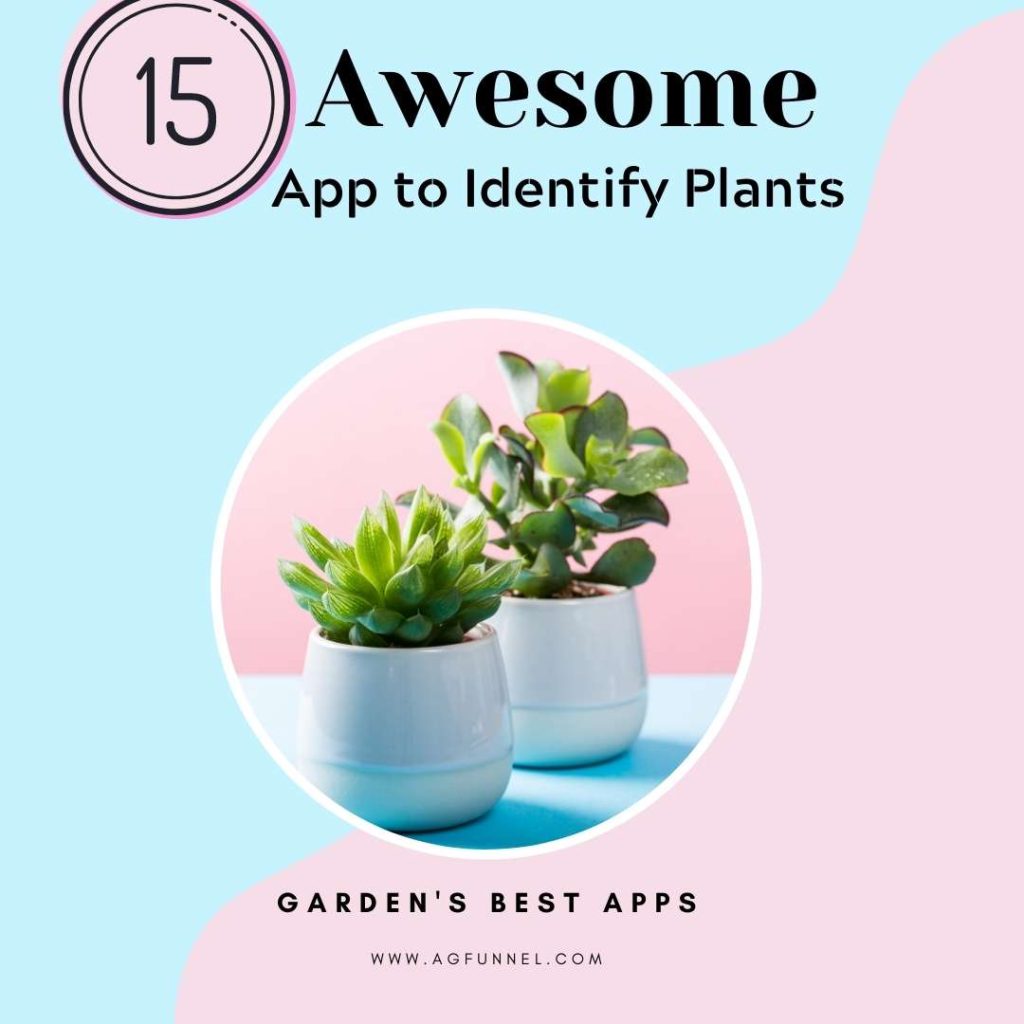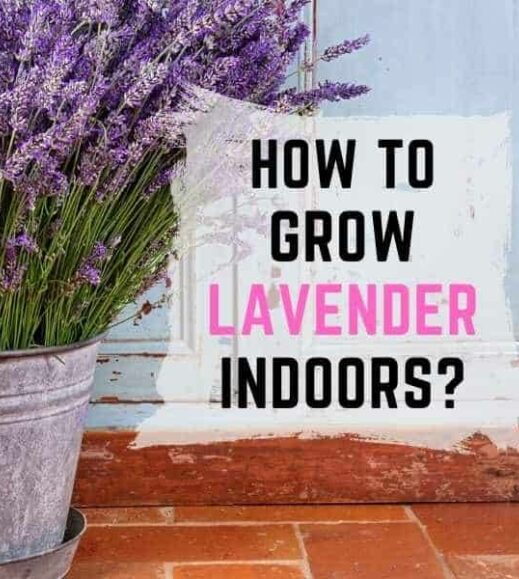Lavender is a plant with many benefits. It has been used for centuries as an herbal remedy, and its uses are growing every day. Lavender needs very little care to grow indoors, but it requires some attention to thrive. This blog post will provide all the information you need to start growing lavenders indoors!
What is Lavender?
Lavender is a delicate flowering plant in the mint family with different colors- purple, white, pink, and blue-violet and many soothing aromas. They represent purity and calmness, so these scents are said to promote health and happiness.
Where To Buy a Plant or Get Lavender Seeds?
You can usually find Lavender plants or seeds at most garden centers. You may occasionally find indoor lavender plants for sale at local nurseries, some grocery stores, or on amazon.
Why Grow Lavender Indoors?
You might be wondering why growing Lavender indoors. Here are the reasons why you should grow your Lavender indoors-
- Growing Lavender indoors is a good way to bring the outside into your home
- Soothing fragrances promote relaxation and happiness
- Pests don't like Lavender, so it's great for keeping bugs away from your house
- Reduce anxiety, depression, insomnia, or hair loss, making it a perfect plant in anyone's home and hospital wards.
- Lavenders calming scent has been shown to improve sleep and reduce agitation in dementia.
What Is The Difference Between French, English, and Spanish Lavender?
Below are some of the most common Lavenders, along with their characteristics:-
English Lavender (Lavandula angustifolia)
- They have a beautiful high, quality scent
- Produce white, pink, and blue flowers
- USDA Hardiness: Zone 5
- Varieties: Royal Velvet, Hidcote Superior, etc
French Lavender (Lavandula dentata; also known as Fringed Lavender)
- They're not as fragrantly potent as English lavender, but they adapt better to interior conditions
- Flowers are not conspicuous
- USDA Hardiness: Zone 8 or 9
Spanish Lavender (Lavandula stoechas; also known as Fringed Lavender)
- Big prominent flowers and comes in a wide range of colors
- USDA Hardiness: Zone 6 or 7
- Varieties: Anouk
French Lavender and Spanish Lavender can grow in warmer climates, whereas English Lavender prefers to grow well in cooler climates.
English Lavender and Spanish Lavender are more suitable to grow and are well-known for their ornamental purpose.
What Type Of Lavender Is Best For Indoors?
If you want to grow Lavender indoors, then Lavenders that grow in small bushes or tumbles, such as English Lavender (Lavandula angustifolia) and French Lavender (Lavandula dentata) types, are the easiest because they do not require much space.

Looking for the best app to identify any plant using your iPhone or android?
How To Grow Lavender Indoors? What Do You Need To Get Started?
Lavender is a popular Mediterranean native plant. So if you're trying to grow it indoors, ensure the plant gets direct sunlight for more than 6 hours. Here are some of the things to get started for growing Lavender Indoors:-
Growing Lavender Indoors From Seed
To start a lavender plant from seed, purchase lavender seeds from a local store or online.
Start the seeds indoors (around 70 deg. F) in a tray with peat moss or a mixture of perlite and vermiculite.
Usually, the seed sprouts in 12-14 days, after which your plants can be placed in sunlight.
You can then transplant your seedlings into your garden.
Lavender Plant Care- How To Plant And Care For Lavender Plants?
Pruning
It is important to prune your lavender plants each year.
Pruning maintains the shape of the plant and encourages blooming. It will also lead to a bushier and stronger plant, which is better for harvesting, drying, or extracting oils from.
You can cut back about a third of the older stems at ground level or slightly higher if you want to keep some of them for longer harvesting.
The types of tools you should use are loppers or shears
Start in late winter before the buds emerge near a stem cut from the previous year for best results.
Prune off any dead branches and take care not to damage healthy branches as much as possible during this process.
Soil: What Are The Best Soil Temperature And Conditions To Grow Lavender Indoors
For Lavender to germinate properly, it needs between 18-21 degrees Celsius.
Lavender plants will perform poorly in either excessive moisture in the soil or humidity.
Lavender prefers well-drained soil.
It will not grow in "wet feet" conditions or waterlogged soil types, which are more favorable to fungi and mosses than flowering plants.
Adding some sand to the soil before planting Lavender will ensure good drainage.
Watering: How Much Water Does Lavender Need?
Are you wondering how often I should water indoor Lavender?
Under normal conditions, Lavender plants need to be watered every two weeks. However, since Lavender is fairly drought tolerant, there is no rule of thumb.
You should check on the soil regularly and water it if it is dry.
Check your soil's pH.
Lavender grows better in well-drained, neutral to slightly alkaline soil with a pH between 6.7 and 7.3.
Fertilizer: When To Fertilize Lavender & How To Fertilize Lavender?
Use a water-soluble plant food or liquid seaweed fertilizer once in early spring, and repeat in early summer if needed.
Avoid fertilizing at least three weeks before expected flowering to keep plants from becoming too soft.
Light: How Much Light Does An Indoor Lavender Plant Need? How bright should your grow light be?
Lavender is a sun-loving houseplant and needs to be placed in a south-facing window for at least 6-8 hours (daytime)
LED grow light can be the best option if direct sunlight doesn't enter your house.
Standard fluorescent tubes suspended 6 to 12 inches above Lavender provide sufficient light for growth.
It is recommended to use LEDs 12 to 18 inches away from the Lavender plant.
Want to know more about LED grow lights for plants? Read here.
Propagation: How to Propagate Lavender?
Here's how to propagate the Lavender plant.
Cutting Propagation
Cutting propagation is the easiest method of growing new Lavender, which makes it ideal for beginner gardeners.
Select softwood or semi-hardwood cutting of Lavender about 10 cm, and then cut it at an angle using the sharp and sterilized blade.
Remove the leaves of the bottom one-third of the cutting.
Make a pot with a moist mixture of half soil and half sand, and remember to use a pot with drainage holes at its base.
Put some rooting hormones at the cut end, bury them in the potting soil, and water them.
Keep the plant under warm, humid, and bright conditions; the root will start to grow after 1 or 1.5 months.
Seed Propagation
Lavender can also be propagated using seeds. See above.
Layering Propagation
- Layering means growing new plants using the stem of the old living plant or mother plant.
- Take a low-growing stem close to the ground or soil for this.
- Using the sterilized blade, make a small wound on its stem to be buried in the soil.
- Then bend the stem and bury its middle part in the soil, leaving its tip perpendicular to the ground.
Potting: Can Lavender Grow In Pots?
Lavender is a versatile plant that can grow in any pot- plastic, clay, or stone containers. It should have drainage holes on its base according to the pot size to prevent root rotting due to damp soil.
Container: How Big Should A Lavender Pot Be?
Container or pot for growing Lavender indoors should be 12 -14 inches deep.
Planting time: When Should I Plant Lavender?
Lavender can be planted outside in spring when the soil gets warm up by about 15 -20 degrees Celsius.
For indoors, by maintaining appropriate temperature, proper light (natural or grow light), and care, Lavender can be grown all year round.
Harvesting: When & How Should You Harvest Lavender?
It is best to harvest Lavender early in the spring, while they bloom, and during the morning, when they have a high fragrance as the day goes on, the scent of the flowers decreases.
Here are some tips on harvesting your Lavender and storing it-
- Cut enough stems you require just before the flowers open
- Then tie the herbs together with string or thread and hang them to dry in a sheltered spot.
Drying Your Lavender: How to Dry Lavender?
Here are the tips on harvesting and drying your lavender flowers for use in cooking or other crafts, including making soap, sachets, potpourri, oil infusions, and more
Some of the best ways to dry Lavender are:
- Hang lavender to dry.
- After cutting the lavender stems with the flower buds, tie them together with the rubber band or rope and hang them in a cool place.
- Protecting the bundle from sunlight is important as sunlight can fade the actual color.
- A drying rack can be used. A drying rack is a great way to dry your Lavender. Drying racks are usually made of wood and wires and can be found at many hardware stores or online.
What are the Other Uses for Lavender Outside of the Home
Lavender is a versatile plant used in any recipe or craft.
For example, lavender flowers are great for making soap and sachets/potpourri to keep your home smelling fresh.
Lavender oil infusions make wonderful fragrances. It is also great for making Lavender essential oil.
How To Make Lavender Essential Oil?
To collect Lavender essential oil, a steam distillation process is used. The basic equipment is:
- The process of steam distillation for Lavender involves heating the plant (usual buds) to boiling point.
- The lavender plant is kept in the pot above the boiling water,
- Then the plant gets vaporized, capturing the essential oil vapors as they rise, then cooling and condensing them into liquid so that oil can be collected.
Is a Lavender Plant Poisonous to Dogs? Are lavender plants toxic?
The lavender plant contains compounds called linalool and linalyl acetate, which are toxic to dogs and cats. However, problems arise only if a dog ingests large quantities of Lavender.
You can minimize the problem by keeping lavender oil and plants away from your pet.
FAQs
Can Lavender be an indoor plant? Will Lavender Flower Indoors?
Yes, Lavender can be grown indoors. Proper care, such as appropriate temperature, drainage pot, and most importantly, direct sunlight or supplementary grow light for 6-8 hours, can help the plant bloom indoors.
Can Spanish Lavender Grow Indoors? Where do You Place Lavender Indoors?
Yes, Spanish Lavender can be grown indoors. The Spanish Lavender should be placed in a south-facing window or near a balcony where direct sunlight will hit the plant 6-8 hours a day.
How to maintain a lavender plant indoors?
Maintaining Lavender is not so hard. You must find a space where direct sunlight can reach for more than 6 hours (or use grow light). You don't need to water it frequently, and your pot should have a drainage hole at its base.
How do you get Lavender to bloom indoors?
Lavenders are adapted to low-nutrient sandy soil. It can tolerate drought, so water it once or twice a week. This helps in blooming indoor lavenders.
How long does it take for a plant to grow from the seedling stage into the full boom phase?
Lavenders usually take 1-2 years for the plant to grow from the seedling stage into the full bloom phase.
What is the best time to move Lavender outside from indoor pots?
When transplanting a lavender outside from indoors, early spring is the best time to do it, when the climate is cool, as Lavender doesn't need too hot a climate to survive.
Can Lavender grow in pots?
Yes, Lavender can be grown in pots. When choosing the size of a pot, you should have good knowledge about your plant variety, how large it can grow, and how large you want it to grow. Buy pots 12-14 inches more than the root ball for your indoor Lavender.
Can my indoor lavender plants be moved outside?
Yes, of course. But it would be best if you did it in early spring.
Where to grow your Lavender plants? Where Should I Plant Lavender?
Plant your Lavender where direct sunlight can reach either indoors or outdoors.
Does Lavender grow back every year?
Under the right conditions, Lavender will thrive for several years in your garden.
Is Lavender Hard To Maintain?
Lavender plants can survive with low maintenance and require minimal watering and pruning. You can prune the matured stem so that plant grows vigorously to bloom new flowers.
How long do lavender seeds last, and how do they store them?
Lavender seeds are viable for 1-2 years. However, the germination capacity or rate falls as the seed gets older. Seeds should be stored in an airtight container and kept in a cool place or away from direct sunlight.
When to water your plants, and how often do they need water?
Lavenders are best to be watered early morning. As Lavenders are drought-tolerant plants, they don't need much water. So, once or twice a week is enough.
Can You Grow Lavender Indoors? What conditions are best for growing Lavender indoors?
Lavender needs direct sunlight or auxiliary light for at least six to eight hours a day, and the soil drains well, so it doesn't get waterlogged in winter.
Growing Lavender in pots: how to care for lavender plants in pots?
Some things to care about while growing Lavender indoors in pots are the pots should have drainage holes to prevent waterlogging. Buy a pot 2-3 inches deeper than the root ball so it has limited space to grow indoors. If it is outdoors, use the pot according to the plant varieties and their growth.
When is the time to harvest, and how much can you expect from a single plant?
Early spring is the best time to harvest Lavender. The amount of lavender buds or flowers from harvesting depends on the size of the plant and the care that you give to your plant.
How to store dried flowers Lavender?
Lavender flowers can be stored in container jars or any airtight vessel. Place it away from sunlight.
Why French lavenders are best for growing indoors?
French lavenders are best to grow indoors as they adapt better to interior conditions.
Does Lavender need direct sunlight?
Yes, Direct sunlight is the most important condition that helps Lavender thrive.
How many hours per day do your Lavender plants need under a grow light?
Grow light is supplementary to natural light. For Lavender, grow light can be used for about 6-7 hours daily, maintaining a distance of nearly 12-15 inches above the plant.
Can the Steps for Growing Shampoo Ginger Lily Indoors Be Similar to Growing Lavender Indoors?
Yes, the steps for growing shampoo ginger plant indoors are similar to growing lavender indoors. Both plants thrive in well-draining soil, require regular watering, and prefer bright, indirect sunlight. However, the shampoo ginger plant may require slightly more moisture than lavender. Overall, the care routines are comparable.
What are the reasons why Is My Potted Lavender Plant Dying?
Some of the reasons may be: Overwatering, lack of drain soil and proper drainage hole, and lack of direct light (natural or artificial).

How to master gardening? Download these essential home and gardening ebooks today!
















